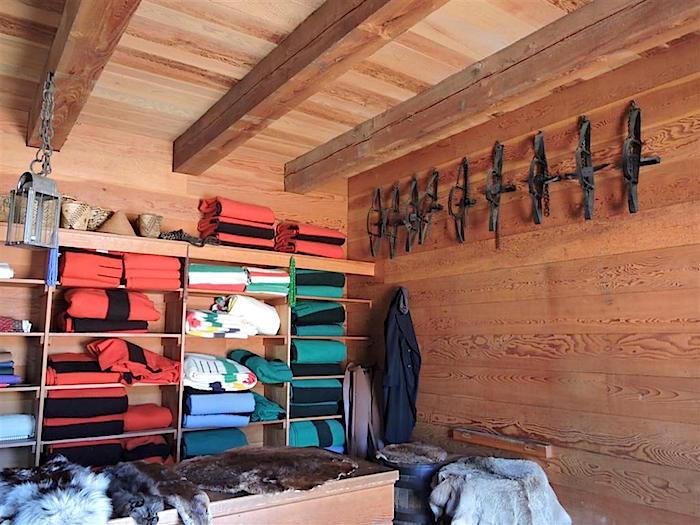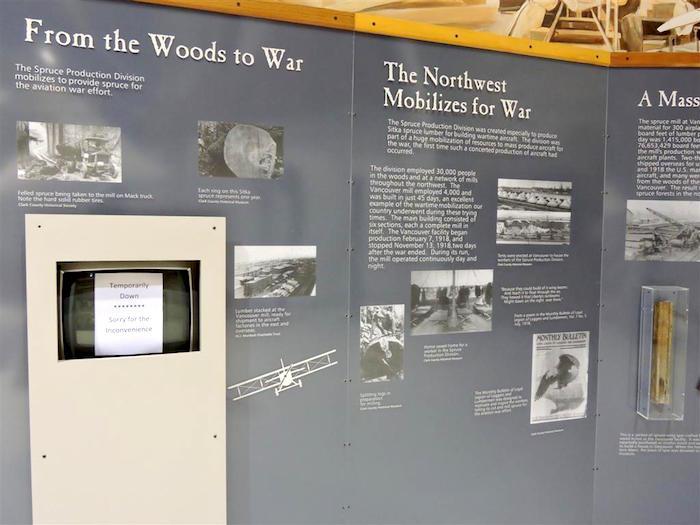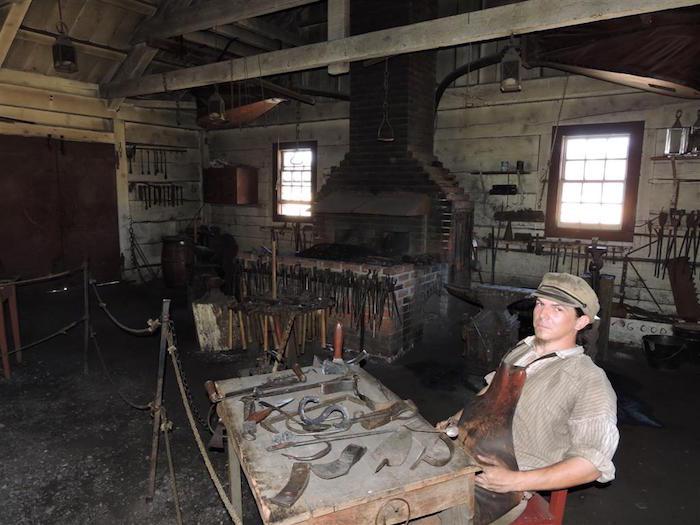
Fort Vancouver National Historic Site in Washington state tells a number of different stories, including one focused on the Hudson Bay Co./Lee Dalton
I’m really not sure what to write about Fort Vancouver National Historic Site. It’s a concoction of miscellany that is very hard to define, much less describe. It didn’t take me very long to begin wondering just where this place should fit in the big scheme of national parks – or even if it should.
Fort Vancouver’s historic story spans more than 200 years and contains two very different chapters. The first chapter dates back certainly to before 1803 when Lewis and Clark passed by. It became a hub of commerce only a few years later when the Hudson Bay Company established a trade center here under the leadership of Dr. John McLoughlin. At the time, the United States and Britain had agreed to share access to the Oregon Country until they could decide on a permanent boundary. In 1825, the Hudson Bay Company built a fort along the north bank of the Columbia River 100 miles from its mouth at the farthest point upriver that could be reached by sailing vessels.
Almost immediately, however, Americans began moving into the territory, drawn by stories of lush forests and fertile lands. Although Britain officially tried to discourage this settlement of what they regarded as their territory, McLoughlin found an active source of customers among them and provided much needed supplies, often on credit.
Finally, in 1846 there were so many Americans living in the territory that it was divided by treaty, setting the permanent border between the U.S. and Canada at the 49 parallel. Fort Vancouver thus was no longer on British land. The fort continued as a trading post until 1860, when the company moved out. By 1866, fires and wet climate had virtually destroyed all traces of the fort.
Fort Vancouver’s second chapter began when the United States needed a place to station soldiers to protect Oregon settlers from Indians. Even before the Hudson Bay Company gave up operations at the old fort, the U.S. Army was constructing the first buildings that would become the nucleus of a newer Fort Vancouver. Well before the Civil War, the fort along the Columbia River had sprouted a number of quite luxurious homes for officers’ families and comfortable quarters for enlisted men. Families of enlisted soldiers frequently lived in housing on the post, as well.
By the time the Civil War began, a long list of officers who would become leading generals on both sides had served tours at Fort Vancouver. Following the war, the fort grew into a downright lavish duty post with construction of large Victorian style homes for officers, sturdy enlisted barracks, a hospital and other amenities that made a posting to Vancouver a plum among career Army men and their families. Two notable officers posted here were Ulysses Grant and George C. Marshal.
In the very early days of aviation, the Army Signal Corps began using aircraft and Fort Vancouver became one of the places where the newfangled flying machines found a base. In a story that’s too long to tell here, an early airstrip that came to be called Pearson Field was built. Today it is one of the nation’s oldest continually operating airfields. Now owned by Vancouver City, it’s a thriving base of operations for a large number of general aviation aircraft.
Any time I visit a place like this, I find myself making little discoveries. Here, for example, I found an explanation for a question about why there was so much Hawai’ian influence in this part of our country. The answer is simple. The Hawai’ian Islands were a hub of sea travel far back into the earliest days of Pacific navigation. Prevailing winds and currents pushed ships right to them. They were a source of provisions and fresh water and soon had become a transfer point for shipments of all kinds going both in and out of the British and American northwest. Naturally, some natives of the islands were transported to the continent along with fruits and fish.
I also learned a bit of aviation history that I found fascinating. It seems that in 1929, three Soviet aviators flying a single-engined Antonov 25 landed unexpectedly at Pearson Field after a non-stop flight from Moscow across the North Pole. They were warmly welcomed by General Marshal and became local heroes. The anniversary of their landing is still commemorated in the area every year with the son of one of the Russian pilots attending from time to time.
I learned, too, that during World War I, the United States had lagged far behind Europe in aviation and, in a desperate attempt to boost aircraft production, soldiers at Fort Vancouver were pressed into service as loggers and sawmill operators to produce spruce needed for aircraft frameworks. Another tidbit was that prior to World War II, the Army made a practice of renting soldiers out as laborers to local business enterprises. It was a way to support the Army in a time when Congress felt that a large standing army was no longer needed since the War To End All Wars had already been fought and a period of isolationism had gripped the nation.

Exhibits surrounding Pearson Field are incomplete/Lee Dalton
But except for the tale of soldiers milling spruce, other exhibits in the airport hangar repeat stories already told at other non-NPS aviation museums in the area. Aircraft on display there include one unidentified thing hanging from the ceiling and an almost modern Ryan Navion civilian aircraft from the 1950s that has nothing at all to do with the military history of the field.
Yet despite all the interesting little things I enjoyed learning, I still find myself wondering, in this day when we are questioning whether or not every place that displays an Arrowhead is worthy of its designation, whether Fort Vancouver fits an appropriate niche in our history.
The hodgepodge of what Fort Vancouver has become leaves me puzzled and a bit frustrated. I was there on a Sunday and a Monday and both days there were very few other visitors. Park staff seemed sparse, with just a few volunteers seeming to be holding down the fort.
Much of the newer parts of the fort, Officer’s Row and its Victorian mansions, the hospital and other parts of the military base are now owned and operated by the Fort Vancouver Historic Trust. Many of the buildings are rented to businesses and some are private homes. The Grant House is a restaurant. The Marshal House contains offices on the second floor – two are local offices of Washington’s U.S. senators. I was guided on a tour by a volunteer receptionist. It was fascinating and very well-done — by a nonprofit entity.
Across the street from Officer’s Row, however, is a collection of mostly boarded-up buildings that reminded me of the Army posts where I lived as an Army brat in the 1940s and 50s. These are the NPS portion of the fort. Some large barracks are currently undergoing restoration. Talking with some Park Service staff here, it didn’t take long to notice an undercurrent of frustration and a couple of references to controversies that mark plans for Fort Vancouver's future.
The temporary visitor center located in the hangar at Pearson Field contains what appear to be homemade exhibits that are really very interesting. But all three of their interactive video exhibits were “Temporarily Down **** Sorry for the Inconvenience.” It’s also very hard to find the place when trying to drive to it. Every once in awhile, you might see a sign telling you to make a turn or go straight, but then the signs end and you’re just as lost as you were before. Even my GPS was confused. It’s almost as if Fort Vancouver is an orphan that has been forgotten at the orphanage.
So again, I find myself wondering what role the National Park Service should be playing in preserving and interpreting the stories behind this place?
My gut feeling right now is that the old Hudson Bay fort with its profound role in Northwestern history certainly deserves the Arrowhead. I wonder if the rest of the fort couldn’t and shouldn’t be left to other capable hands. Would that free some funds so the Service could do a better job of preserving and interpreting the Hudson Bay side of Fort Vancouver?

A volunteer staffs the blacksmith shop at Fort Vancouver/Lee Dalton
As usual, I find myself asking how much of this situation might come from inside the Park Service and how much has been imposed by powerful political forces from somewhere far above? Is this another case of local Park Service managers being told by Congress or departmental decree, or moneyed business interests and politicians locally to deal with it and make the best of it and, oh by the way, Good Luck? What kind of mess will the current menagerie of Congressional hearings we read about recently in Traveler produce?
Again, I don’t know. But maybe in this centennial season, there are some difficult questions to ask and answers to seek. Perhaps pausing to consider the tough questions might provide answers that could shape a better future for all our parks.



Comments
I find it interesting that so many of your articles question whether or not national parks - including Hagerman Fossil Beds and Minidoka, in addition to Fort Vancouver - should be administered by the National Park Service. I understand that the National Parks Traveler isn't meant to be an "echo chamber" for the NPS, but perhaps we can give the American people the benefit of the doubt that these special places, with their irreplaceable natural and cultural resources, were set aside in perpetuity for a good reason. Over the course of history, the decisions made at this site had huge implications for the people of the Pacific Northwest, and it is important to our American story.
Though some parks interpret just a tiny time period or slice of history, others, like this one, are created to tell a story about decades or centuries (sometimes even millennia!) of history. I guess sometimes that might seem like a "concoction of miscellany" to some people.